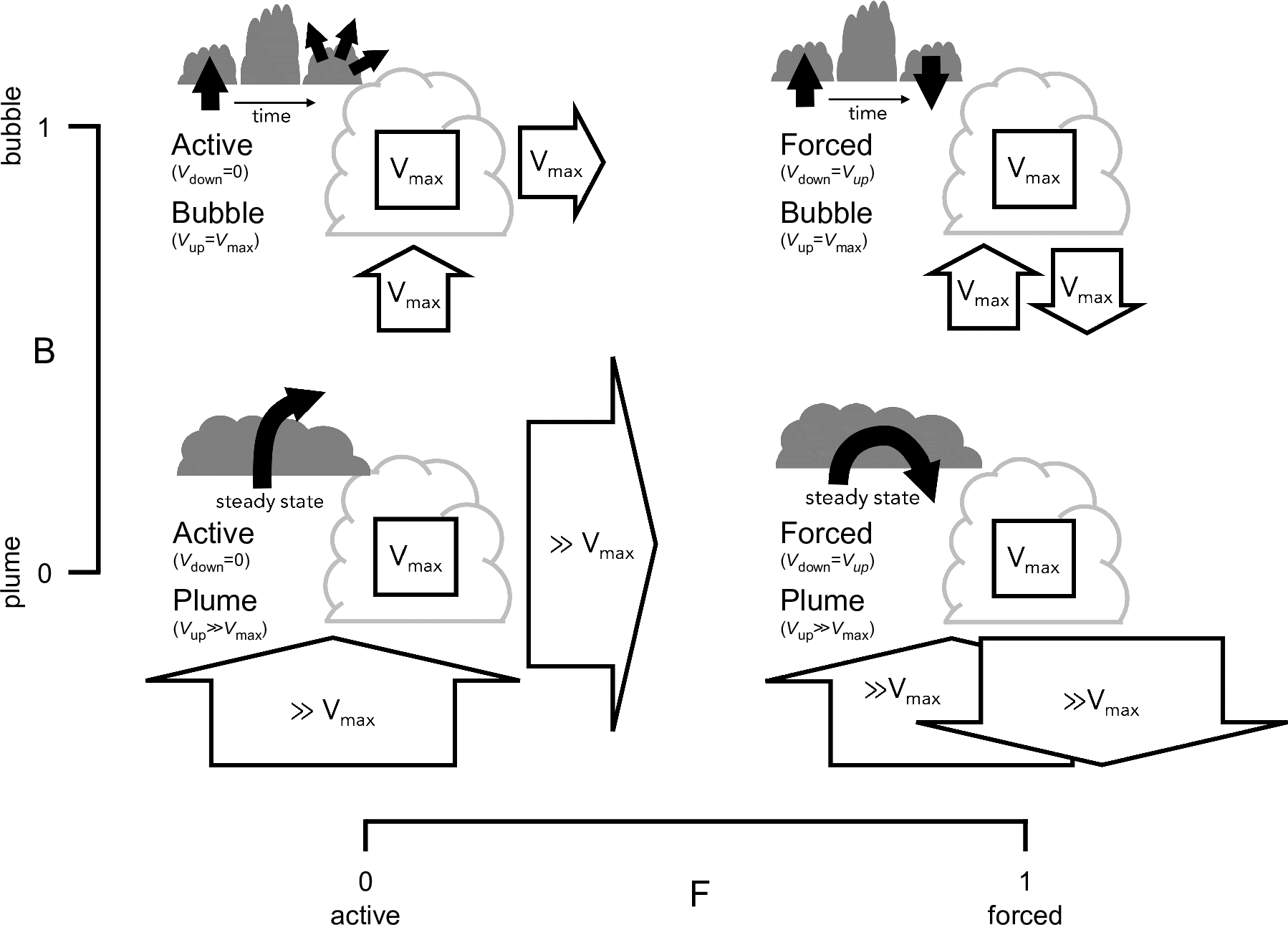Romps, Öktem, Endo, and Vogelmann, On the lifecycle of a shallow cumulus cloud: Is it a bubble or plume, active or forced?, JAS, 2021
Talk
Paper
Description
The puffball of a cloud with a flat bottom and cauliflower top, which is a common sight overhead in summertime, is called a shallow cumulus, or shallow cumuli for plural. They are often welcomed for the patches of shade they provide. That shade is generated by the cloud reflecting sunlight back to space. By reflecting that sunlight to space, shallow cumuli keep Earth cooler than it would be in their absence. In fact, if shallow cumuli did not exist, the temperatures were we live would be nearly 10 °F hotter than they are today.
A shallow cumulus is fed at its base by ascending air and the fate of that cloudy air determines how big the cloud becomes and how long it lasts, both of which are critical for determining its overall climate impact. The cloudy air will eventually convert to clear air by one of two mechanisms: either by drying out above the cloud base (by mixing with clear air, which evaporates its drops) or by descending back down through the cloud base (the increase in pressure compresses the air, heats it up, and dries out the drops). A cloud whose drops evaporate above the cloud base is called "active" and a cloud whose drops evaporate as the air sinks back down through the cloud base is called "forced". Clouds can also behave as either long-lived fountains of air (like a "plume") or as an isolated packet of air (like a "bubble"). In this paper, we give rigorous measures of these properties as a step towards quantifying shallow-cumulus lifecycles and understanding why they generate 10 °F of cooling and not 5 °F or 20 °F.
Using stereo cameras and a Doppler lidar at the Department of Energy's Southern Great Plains (SGP) site in Oklahoma, we find that shallow cumuli are intermediate between active and forced, and are much more bubble-like than plume-like. In contrast, large-eddy simulations that are designed to model the SGP atmosphere generate clouds that are more active and plume-like than the observations, suggesting room for improvement.
The four extreme cases of a shallow cumulus cloud: (top left) an active bubble with F ≡ Vdown/Vup = 0 and B ≡ Vmax/Vup = 1, (top right) a forced bubble with F = 1 and B = 1, (bottom left) an active plume with F = 0 and B = 0, and (bottom right) a forced plume with F = 1 and B = 0.
